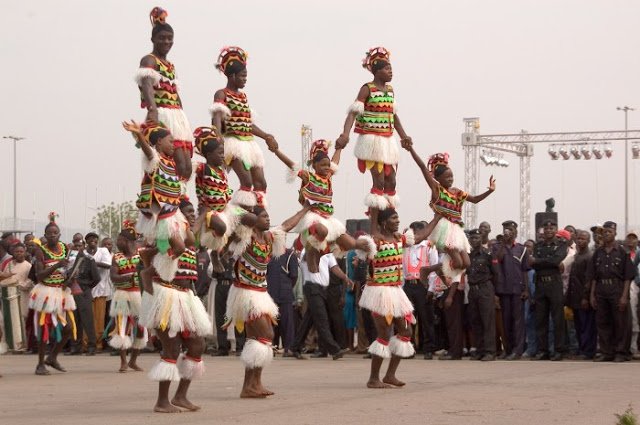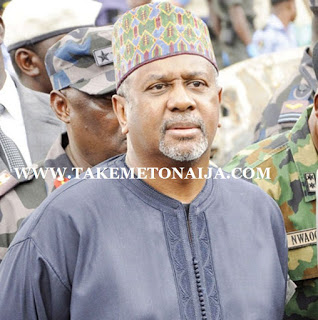FACTS OF THE WEEK: Checkout These 20 Interesting Facts About Nigeria(part2)
 |
| Nkpokiti Dance Group from Anambra state |
1. Pre-tribalism: John Umoru, from Etsako in today’s Edo State (Western region) was elected for the House of Assembly to represent Port Harcourt in the Eastern Nigerian House of Assembly.
2. The Colonial Cantonments Proclamation of 1914 established ‘foreign quarters,’ ‘Sabon Gari,’ institutionalizing the Sabon Garuruwa system of ‘foreigner’ residential segregation in Nigeria.
3. Crispin Curtis Adeniyi-Jones (1876-1957) who the street in Ikeja, ‘Adeniyi-Jones’ was named after, was a medical director from Sierra Leone (a Saro). As a co-founder of NNDP, he won one of the Lagos 3 legislative council seats in 1923 and represented Nigerians for 15 yrs.
4. Saros was the name given to 19th and 20th century ‘Creole’ African literati migrants from Sierra Leone.
5. Amaros was the name for repatriated Brazilian and Cuban slaves; the ‘Aguda’ people of Lagos today. This Brazilian community includes deportees of the brave “Malê Revolt” in Portugal.
6. British colonization was not all voluntary ‘happy slave trade,’ but involved brutal terror against non-cooperation and stiff opposition. Captain Lord Esme Gordon Lenox, ‘With The West African Frontier Force,’ describes: “…we stormed down to Amassana, which was a town supposed to be friendly and fined them 25 goats and 20 chickens for non-assistance, then returned to Agbeni and burned half…October 1st was spent in continuance of yesterdays incendiraism by burning every town or farm we could see. I shudder to think of how many houses we have destroyed in these two days. On our way back to Egbbeddi in the afternoon we passed by Sabagreia and told our old friend Chief Ijor that most likely we should burn down Sabagreia the next day…”
7. Nigeria’s population was just 16 million in 1911. It is projected to hit 444 million by 2050, surpassing the US and becoming the 4th largest in the world.
8. The population of Lagos today is about more than the total population of all Eastern states combined.
9. Lagos’ population in 1872 was 60,000. By 2015 it will be the third largest city in the entire world.
10. Nigeria’s north (719,000 sq. km), occupies 80% of Nigeria’s land mass. In size it is four times the South.
11. 1st republic Aviation Minister, Chief Mbazulike Amaechi hid former South African President, Nelson Mandela, for six months in Nigeria to evade his arrest by the apartheid regime.
12. Gangsta: In 1984 under the disciplinary Buhari/Idiagbon government, there was a sophisticated attempt to kidnap and repatriate ex-civilian regime minister of transport, Umaru Dikko from the UK, anesthetized in a freight crate, for the embezzlement of $1bn under the Shagari regime.
13. Valor: Part of the ‘Forgotten Army,’ Nigerians volunteered to fight with the allied forces among the 81st and 82nd West African Divisions, in the Second World War.
14. The Adubi war in 1918 was a major uprising by 30,000 Abeokuta Ebga warriors against the colonial government for colonization, taxation and slave labor. One British was killed and rail and telegraph lines destroyed. The British rewarded their soldiers with medals for quelling the uprising. Awape Adediran a Molashin/ Kingmaker was imprisoned for his active involvement.
15. Activist Mrs. Fumilayo Ransome-Kuti travelled widely, including to the Eastern bloc (Hungary, USSR and China where she met Mao Zedong). These interactions angered Nigeria, Britain and America. America called her a communist and refused her a U.S. Visa.
16. Mrs. Fumilayo Ransome-Kuti, legendary Fela’s mother, was one of the delegates that negotiated Nigeria’s independence in Britain.
17. Once upon a time, the north was the more literate part of Nigeria. According to Lord Luggard, there were 25,000 Qur’anic Arabic schools with about 250,000 pupils in the north.
18. Sardauna of Sokoto said he preferred foreign workers to Igbo’s because he felt Igbo’s are domineering. This was while Nigeria existed as regions with regional administrations.
19. Kaduna Nzeogwu killed Sardauna in Nigeria’s first military coup.
20. In 1966, a mischievous Igbo owned bakery allegedly made a loaf of bread with a label that depicted Nzeogwu as the Saint in the ‘Saint George and the Dragon’ medieval tale, killing Sardauna, the ‘dragon,’ this labeled bread provoked deadly anti-Igbo riots.


